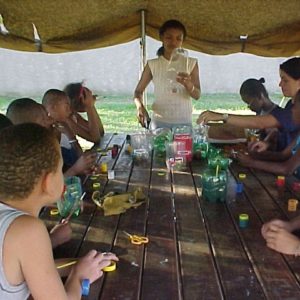Last week, I was in Italy for an academic forum about Latin perspectives on Design and I presented our view from Faber-Ludens Institute. I described the context where the Institute emerged and explained our Design Livre approach for project development. Previously, I used the translation Free Design, but from now on I’ll keep the original Brazilian term, to avoid the “gratis” meaning and to point to it’s cultural context.
As I explained in the presentation, Design Livre draws from the cultural cannibalism concept developed by Brazilian modernist artists at the beginning of the XX century. At that time, Brazil was already politically independent, however under strong cultural influence from European countries. When trying to develop an authentic Brazilian identity to cultural production, modernists could only see the image of the pre-colonization indian.

It was Oswald de Andrade that gave a step forward defining Brazilian culture as a mix. The Cannibal Manifesto called for the appropriation of foreign concepts into Brazilian culture, by harsh adaptation to local context.
 Andrade’s manifesto inspired artists from the late 60’s Tropicalia movement, mixing elements from the emergent global pop culture and native characteristics. One prominent artist from that movement, Gilberto Gil, became the Brazilian’s Minister of Culture in 2003 and started many programs to support cannibalism over digital media. Free Software, Creative Commons and Collaborative Media became widespread in Brazil then.
Andrade’s manifesto inspired artists from the late 60’s Tropicalia movement, mixing elements from the emergent global pop culture and native characteristics. One prominent artist from that movement, Gilberto Gil, became the Brazilian’s Minister of Culture in 2003 and started many programs to support cannibalism over digital media. Free Software, Creative Commons and Collaborative Media became widespread in Brazil then.
The popular practice of gambiarra (kludging) and jeitinho brasileiro (how brazilians call their loose way of solving problems) were resignified in face of hackerism and collaboration from the pervading global digital culture.
At the same time, the growth of national economy allowed many people from low-income communities to have access to the Internet, where they found opportunities to show up their cultural values, neglected by major media. Social networks boosted, specially Google’s Orkut, which Brazilians believe they had “conquered”.

Aiming to support the design of local technologies, Faber-Ludens Institute for Interaction Design was founded in 2007 without any institutional funding. Therefore, first activities were held basically on the Internet, where a website and a discussion list was opened.
Members of the discussion list organized themselves to translate basic texts on Interaction design because most brazilians don’t read English. A wiki was born out of that, including later information about methods, tools, books and movies that members wanted to share.

In partnership with a Colombian University, Faber-Ludens started to offer a graduate course on Interaction Design in Curitiba, South of Brazil. The curriculum was structured to offer a strong social background, emphasizing Interaction Design role in culture production. Each theoretical course was accompanied by an experimental design project. All assignments required students to publish their works on Faber-Ludens website, where non-students community members could comment. The same for teaching materials.
Non-student members reported learning by following published projects. Although projects were published under a Creative Commons License, some ideas were copied by non-members without giving any credit. Instead of trying to regulate that cannibal practice, Faber-Ludens stimulated even more its students to publish their projects, documenting the design process step-by-step. Faber-Ludens had the hard task of pioneering Interaction Design in Brazil, so we believed that spreading the practice was more important than being credited. The benefit for us would come later, when the whole area was stronger.
Of course we stimulated cannibalism among our students. One good example is Pulse, a bracelet that vibrates to help hearing impaired enjoy sound. Pulse is currently shortlisted in 2012 IxDA Awards.
Apart from borrowing the aesthetics of sound equalizers and sport watches, the interaction itself was inspired by previous student project named Visual Ear, which featured a Lego Mindstorms puppet robot that moved according to audio stimuli.

Cannibalism avoid good ideas to die in non-fertile terrain. It was not until Apple “visited” the Xerox Parc labs that the Graphic User Interface have developed into a viable product. Apple profited not from the idea, but from the digestion of the idea, which came out in the form of the Macintosh. However, if Apple kept Macintosh in their labs like Xerox was doing, none of subsequent innovations developed from the GUI metaphor would be possible. Ideas must be free to profit from them.

We can already see the result of the Design Livre approach from Faber-Ludens. Interaction Design community in Brasil is growing very quickly. Since 2007, DesInterac mail list had grown to more than 1.100 participants. Many graduate courses had started in other Universities. Companies started to sell Interaction Design as a recognized service. Brazil even has a cannibalized version of the IxDA Interaction event: Interaction South America.
If you want to see cultural innovation from Interaction Design, keep a look on Brazil right now.

